Skip Counting

Skip counting is one of the first math skills that your child will need to master before learning how to multiply.
It sets the foundation for understanding how multiplication works and breaks down multiplying into simpler tasks.
By adding a number to itself over and over again, your child sees and memorizes the counting pattern.
He or she will be closer to understanding what you mean when you start showing simple multiplication problems and in later grades, when students are asked to memorize the multiplication tables.
Skip Counting Worksheets
Learning multiplication often begins in Kindergarten and First
Grade. While children in these classes aren't likely to be working out
multiplication problems, they do start learning this important skill that
builds up to later problem-solving.
These drills are a helpful way to learn multiplication tables.
Instead of counting by ones, you count by multiples (such as twos,
threes, fours, fives, etc...).
Once a child has learned how to
skip count, you can begin to introduce multiplication (which can be seen
as another way to skip count).
For example, counting by twos:
2, 4, 6, 8, 10
naturally progresses to:
2x1=2
2x2=4
2x3=6
2x4=8
2x5=10
Our son didn't begin solving multiplication problems until 3rd Grade.
Earlier grades touched on it a little bit, but we never went into
memorizing multiplication facts.
He has done pretty well learning
his facts from 0 to 12 and I'd like to think that's partly due to the
time we spent learning how to skip count.
Counting by twos, fives, and tens
can be done easily with common items. You can count the eggs in an egg
carton by twos. Count fingers and toes by fives or count the entire
family's digits by tens.
Other numbers can be a bit harder to
come up with everyday items to count. You might find the worksheets
below helpful for counting those numbers.
I've prepared activity sheets for counting by two's and all the numbers up to ten.
Click on any number to find practice sheets for counting by that number.
Teaching Sequence
This form of counting is generally introduced in first grade, and it is best to start first with the tens and then go on to the fives and twos.
As you work on counting by ten, you might also want to introduce some lessons on the tens and ones place value.
Try to get your child to memorize the counting pattern up to 100. The other digits will follow once the fives, tens and twos are mastered.
This printable hundreds chart is a useful tool to help your child visualize what skipping means. When you visit the individual counting pages, you'll find some worksheets that are based off of the hundreds chart as well as some other activities and videos to help you teach this skill.
More Counting Fun:
Worksheets › Skip Counting
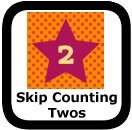
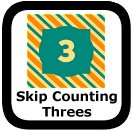
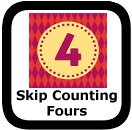

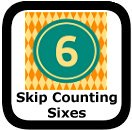
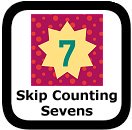
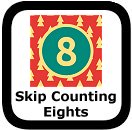
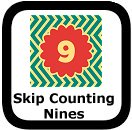
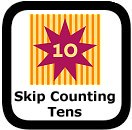
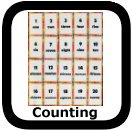

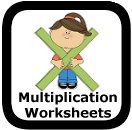

New! Comments
Have suggestions or requests for a worksheet? Let's Talk!